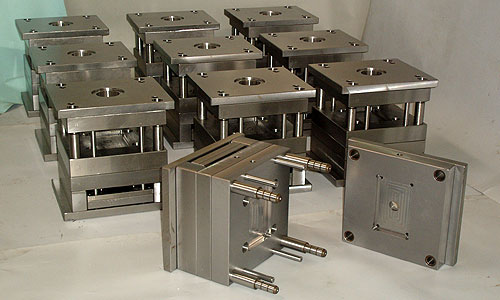The manufacturing industry in Vietnam has been experiencing rapid growth, driven by foreign investment, the expansion of local companies, and an increase in domestic demand. One of the critical components in this sector is mold steel, which plays a vital role in producing high-quality molds and dies for various applications, including automotive, electronics, and consumer products. In this article, we will explore the importance of mold steel in Vietnam's manufacturing industry, its types, applications, and the factors influencing its demand.
What is Mold Steel?
Mold steel is a type of tool steel specifically designed for manufacturing molds, dies, and other tooling components. This steel provides the necessary hardness, toughness, and wear resistance required in the production of precision parts. With its distinct properties, mold steel can significantly impact the efficiency and quality of the manufacturing process.
Types of Mold Steel
There are several types of mold steel available, each with its unique characteristics and applications:
- Cold Work Tool Steel: Ideal for producing molds that do not require heating during the forming process. Its high hardness and wear resistance make it suitable for applications in stamping and forging.
- Hot Work Tool Steel: Designed for high-temperature applications, this steel can withstand thermal fatigue and remain durable during processes like die casting and hot forging.
- Plastic Mold Steel: Specifically engineered for producing molds used in plastic injection molding. It offers excellent polishability and corrosion resistance.
- High-Speed Steel: Known for its ability to retain hardness even at high temperatures, this steel is suitable for mold fabrication processes involving cutting and machining.
Applications of Mold Steel in Vietnam
The versatility of mold steel makes it applicable in various manufacturing sectors, including:
| Sector | Application |
|---|---|
| Automotive | Production of mold for car parts such as bumpers, dashboards, and engine components. |
| Electronics | Creation of plastic molds for casings and components used in electronic devices. |
| Consumer Products | Manufacturing molds for household items such as containers, kitchenware, and appliances. |
| Medical Devices | Design and production of precision molds for medical device components. |
The Impact of Mold Steel on Production Quality
The quality of mold steel directly influences the production quality of the final products. Key factors include:
- Durability: High-quality mold steel ensures longer life cycles for molds, reducing the need for frequent replacements.
- Precision: Properly selected mold steel contributes to the accuracy of the molds, ensuring that the final products meet strict dimensional tolerances.
- Surface Finish: Certain types of mold steel provide excellent surface finishes, enhancing the aesthetic and functional qualities of the molded parts.
- Cost Efficiency: Investing in high-quality mold steel can lead to lower overall production costs by minimizing downtime and improving production rates.
Factors Influencing the Demand for Mold Steel in Vietnam
Several factors contribute to the growing demand for mold steel in Vietnam's manufacturing industry:
- Economic Growth: Vietnam's rapidly expanding economy encourages investment in manufacturing capabilities, driving the need for high-quality tooling materials.
- Technological Advancements: As manufacturing processes become more sophisticated, the demand for specialized mold steels that can withstand higher pressures and temperatures increases.
- Foreign Direct Investment (FDI): The influx of foreign companies investing in Vietnam’s manufacturing sector boosts the demand for high-performance mold steel.
- Government Initiatives: Policies promoting industrialization and infrastructure development create a favorable environment for mold steel suppliers.
Challenges Facing the Mold Steel Industry
Despite the robust growth of the mold steel market, several challenges persist:
- Supply Chain Issues: Dependence on imported raw materials can lead to supply chain vulnerabilities and price fluctuations.
- Quality Control: Ensuring consistent quality in mold steel production is crucial for maintaining its reliability and performance.
- Competition: An increase in local and international competitors may impact pricing and market share.
- Technological Barriers: Keeping up with the latest advancements in mold manufacturing technology is vital for maintaining competitiveness.
Conclusion
In Vietnam's rapidly evolving manufacturing landscape, mold steel has become an indispensable material, contributing significantly to the quality and efficiency of production processes. Understanding the different types of mold steel, their applications, and the factors influencing their demand is critical for stakeholders in the industry. While challenges exist, the overall outlook for mold steel in Vietnam is promising, driven by economic growth, technological advancements, and foreign investments. Businesses must adapt to this dynamic environment to leverage the opportunities presented by the growing demand for high-quality mold solutions.

